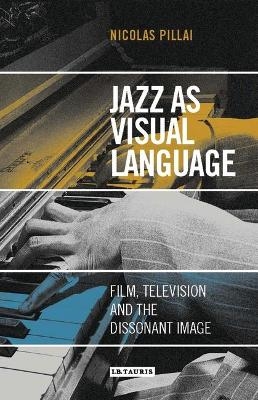
Jazz as Visual Language
Film, Television and the Dissonant Image
Seiten
2016
I.B. Tauris (Verlag)
978-1-78453-344-1 (ISBN)
I.B. Tauris (Verlag)
978-1-78453-344-1 (ISBN)
The new phenomenon of jazz music took the world by storm in the 1920s and 1930s.
This book provides a timely analysis of the relationship between jazz and recording and broadcast technologies in the early twentieth century. Jazz histories have traditionally privileged qualities such as authenticity, naturalness and spontaneity, but to do so overlooks jazz's status as a modernist, mechanised art form that evolved alongside the moving image and visual cultures. Jazz as Visual Language shows that the moving image is crucial to our understanding of what the materiality of jazz really is. Focusing on Len Lye's direct animation, Gjon Mili's experimental footage of musicians performing and the BBC's Jazz 625 series, this book places emphasis on film and television that conveys the 'sound of surprise' through formal innovation, rather than narrative structure. Nicolas Pillai seeks to refine a critical vocabulary of jazz and visual culture whilst arguing that jazz was never just a new sound; it was also a new way of seeing the world.
This book provides a timely analysis of the relationship between jazz and recording and broadcast technologies in the early twentieth century. Jazz histories have traditionally privileged qualities such as authenticity, naturalness and spontaneity, but to do so overlooks jazz's status as a modernist, mechanised art form that evolved alongside the moving image and visual cultures. Jazz as Visual Language shows that the moving image is crucial to our understanding of what the materiality of jazz really is. Focusing on Len Lye's direct animation, Gjon Mili's experimental footage of musicians performing and the BBC's Jazz 625 series, this book places emphasis on film and television that conveys the 'sound of surprise' through formal innovation, rather than narrative structure. Nicolas Pillai seeks to refine a critical vocabulary of jazz and visual culture whilst arguing that jazz was never just a new sound; it was also a new way of seeing the world.
Nicolas Pillai is a research fellow in the School of Media at Birmingham City University, UK. He is the co-editor of Brilliant Corners: Approaches to Jazz & Comics (2016) and New Jazz Conceptions: History, Theory, Practice (2017). He has contributed chapters to Gender and Identity in Jazz (2016) and The Routledge Companion to Jazz Studies (2017), as well as articles in journals such as The Soundtrack and Movie: A Journal of Film Criticism. He has also written an essay for the booklet included in the BFI dual format Blu-ray/DVD release of Paris Blues (1961).
1. Introduction
2. Len Lye
3. Gjon Mili
4. Jazz 625
Coda: Jazz in motion
| Erscheint lt. Verlag | 15.11.2016 |
|---|---|
| Zusatzinfo | 20 bw integrated |
| Sprache | englisch |
| Maße | 138 x 216 mm |
| Gewicht | 358 g |
| Themenwelt | Kunst / Musik / Theater ► Film / TV |
| Kunst / Musik / Theater ► Musik ► Jazz / Blues | |
| Sozialwissenschaften | |
| ISBN-10 | 1-78453-344-0 / 1784533440 |
| ISBN-13 | 978-1-78453-344-1 / 9781784533441 |
| Zustand | Neuware |
| Haben Sie eine Frage zum Produkt? |
Mehr entdecken
aus dem Bereich
aus dem Bereich
zur politischen Ästhetik des Jazz
Buch | Hardcover (2023)
Phillip Reclam (Verlag)
38,00 €
Die Geschichte des Jazz in Deutschland
Buch | Softcover (2021)
Reclam, Philipp (Verlag)
20,00 €


